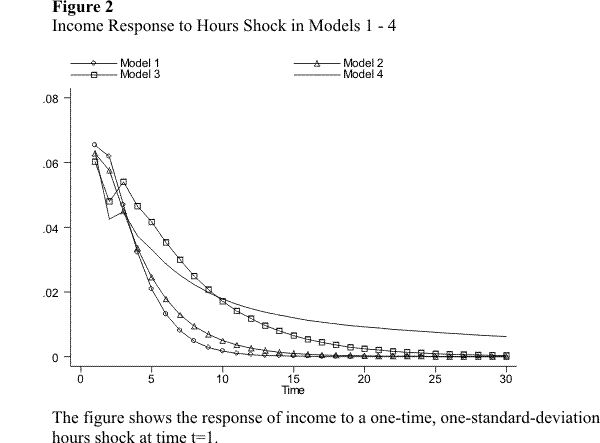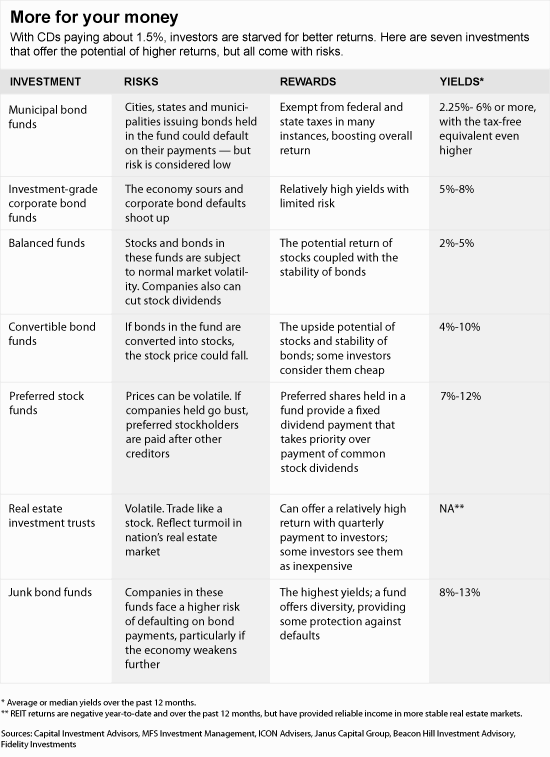Municipal Bonds Overview
Post on: 21 Май, 2015 No Comment

Municipal bonds. aka. munis, are issued by state and local governments, utility companies, hospitals, and even universities. These entities raise money to pay for new schools, road improvements, sewer maintenance, etc. The interest payments made to the bond holder is created by the underlying business revenues that are made by these entities. For example, in the case of an electric company, bond holders are paid through the cash revenues generated from customers paying their electric bills.
Municipal bonds have a unique characteristic in terms of their tax structure. They are completely free of federal taxes and if you are a resident of the state that issued the bond, state and local taxes may even be waived. The bond community considers municipal bonds to be one of the last tax shelters around.
While municipal bonds may seem like a no brainer, you need to approach them with more caution than you would a treasury bond. There is more implied interest rate and credit quality risks with municipal bonds and in spite of the tax shelters that they can provide, other types of fixed income securities may still provide a better return. There is not as large of a market for municipal bonds as there is with treasuries and therefore, there is a lack of liquidity which creates issues when you are trying to sell your bond. A lack of liquidity and the high commission charges for trading this security almost make it a buy and hold till maturity.
Additionally, entities classified as non-profit organizations usually achieve better yields from corporate bonds due to their tax-exempt status.
Municipal Bonds Compared to Other Fixed Income Securities
While a tax shelter is a great thing to have, your financial situation can dictate whether or not it is wise for you to purchase munis. In many cases, the total return from a taxable treasury bond may offer a better return than a municipal bond which is completely tax exempt. The reason for this is that investors tend to accept lower yields on non-taxable bonds. An easy way to make this comparison is through a calculation known as the taxable equivalent yield.
Lets assume you are receiving a yield of 4% from a municipal bond and you want to understand the equivalent yield that you would need to receive from a treasury bond to compensate for the tax advantage that the munis offer. For the sake of the calculation, let’s also assume you are in a 28% tax bracket. The calculation would be written as so:
Taxable equivalent Yield = .04/(1-.28) = .0555 = 5.56%
Now, this calculation assumes that you are investing in in-state municipal bonds. In some cases, especially in states with high state and local tax (i.e. New York), it may be more beneficial to invest in out of state municipal bonds because there is a huge demand for these bonds which will drive the yield down. Let’s compare the 4% in state muni yield against a 4.4% out of state muni yield. Also, assume that your in state tax rate is at 6%.
Out of State Taxable Equivalent Yield = (.044 * .94) = .412 = 4.12% yield
In this case, you can see the out of state taxable equivalent yield of 4.12% is greater than the in state option at 4%.
Generally speaking, investors in higher tax brackets tend to do better investing in municipal bonds.
Assessing Credit Quality of Municipal Bonds

Municipal bonds come in two forms; general obligation (GO) or revenue bonds. They both are very similar with the exception of the type of local entity that is issuing the debt. General obligation municipals bonds are generally issued through state and local governments to fund more public service functions such as road repair and schools. Revenue bonds are slightly different in that they are issued by local businesses that avail certain necessary functions such as the electric company, water company, airports, hospitals, etc.
There is a general consensus that assumes GO bonds to be safer than revenue bonds. This is not entirely accurate. The bottom line when investing in any municipal bond is that you need to evaluate the credit quality and more importantly understand how the issuer plans to pay their debt back. Make sure that the entity has a long history of paying their bond holders on time and in full. Check their credit quality and make sure it has been stable for a number of years. A few simple questions to your broker will keep you out of trouble.
Muni’s and Options
Some longer term municipal bonds have optionality built into them through either a callable option or a put able option. Typically, calls are built into 30 year munis and have a 10 year lockout period. Be careful to read the prospectus or ask your broker if there are any call features to the bond. Putable options are the opposite of call options in that they allow the bond holder to return the bond back to the issuer at par on predefined dates or time intervals. This option is especially helpful if interest rates rise; you can get your investment returned and invest in higher yielding equivalents. As with calls, there will be a premium to be paid upfront by the bond holder to have this option and subsequently, you will receive a lower yield on your bond. Additionally, if rates actually fall lower, a putable bond will not appreciate as fast as one without the option.
Conclusion
The research suggests that an investor can get the most attractive yields on the middle of the muni yield curve. 10 year munis tend to offer the best yields and actually tend to have substantially lower risk than the 30 year long bond. In fact, the 10 year was historically seen trading with a yield at almost 90% of the long bond. As you can see, there is no reason to buy the long bond as it does not compensate you for the additional risk.
Do your homework when your investing in municipal bonds. There tends to be a bit more research that needs to go into municipal bonds before investing. You should be asking common questions such as: is the bond insured. who is the issuer. what is the bond rating without insurance. what is the YTM? is there an embedded option in the bond? what business is the issuer involved in and how stable are they historically when it comes to coupon payments and principal redemption? Ask some of these questions and you will be down the right path of investing in municipal bonds.














